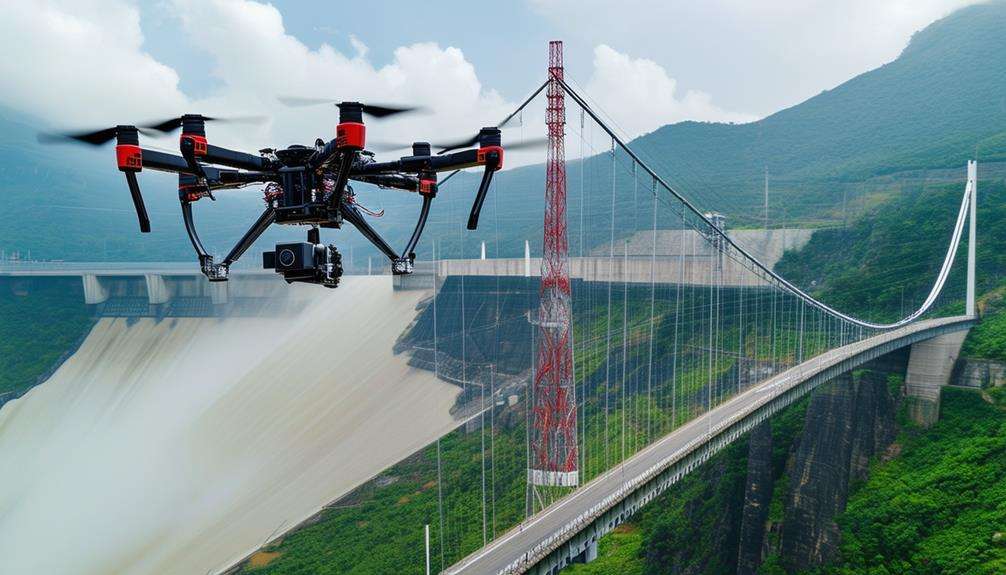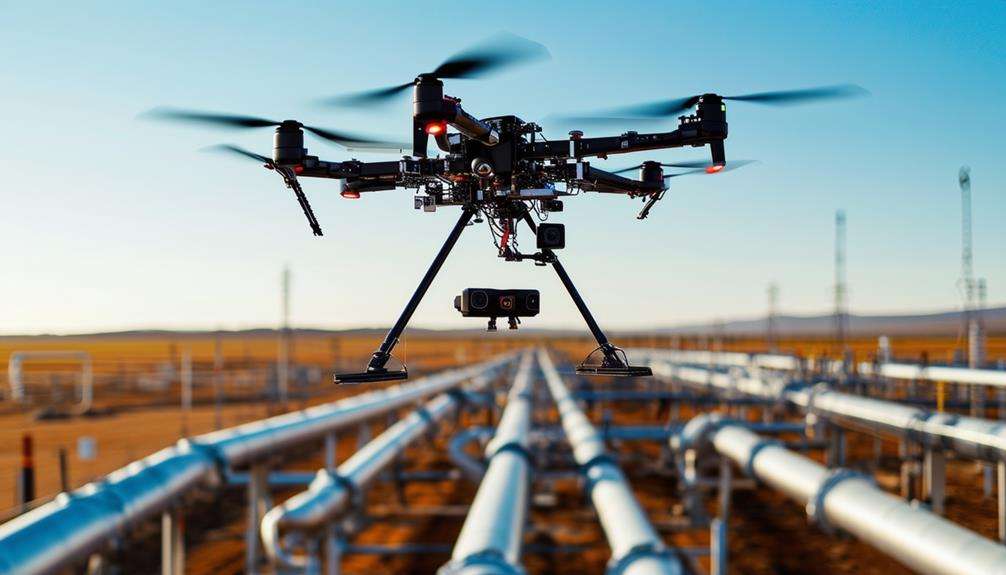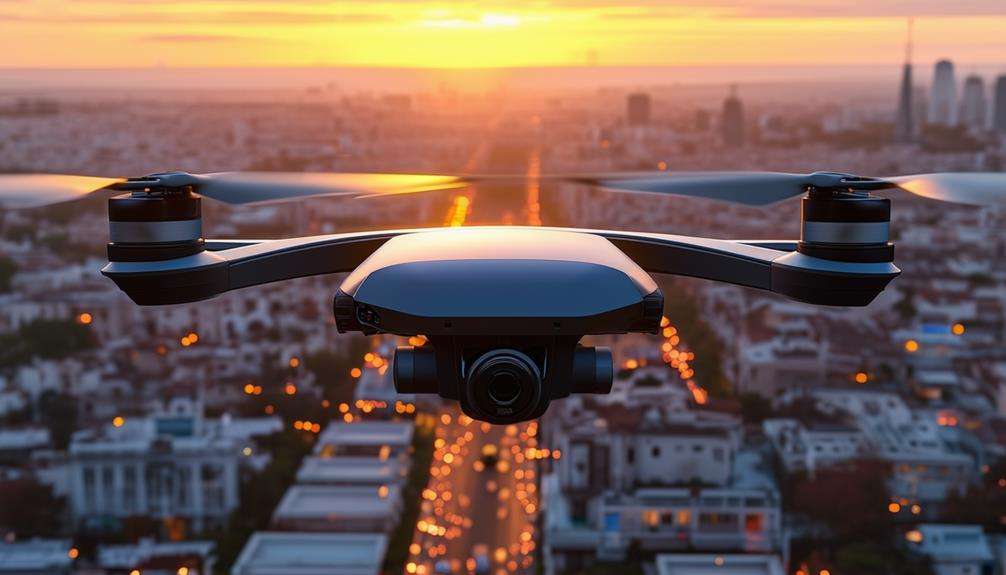How Drone Cameras Capture Stunning Aerial Footage
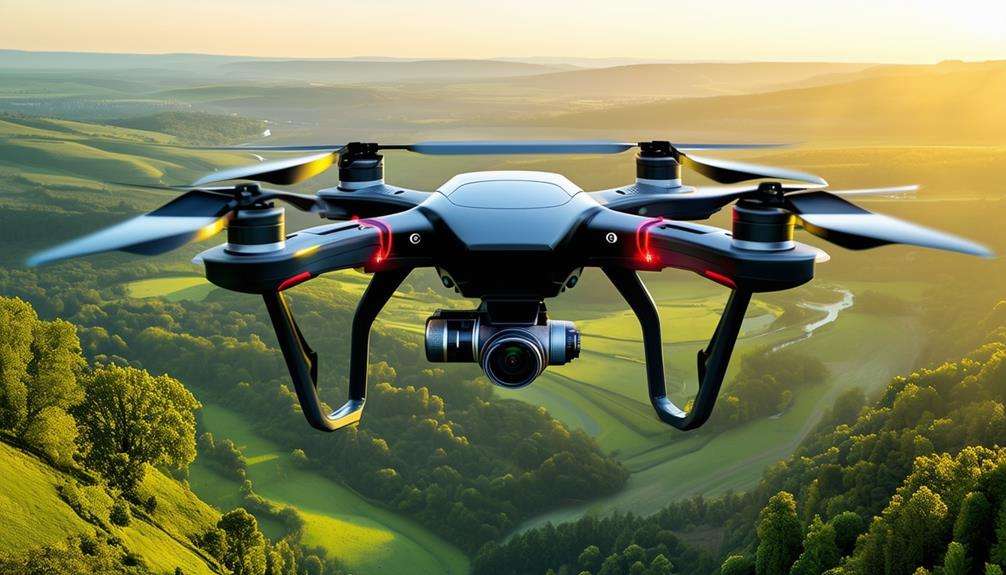
Capturing stunning aerial footage with drone cameras requires more than just cutting-edge technology; it demands the right approach. Selecting an appropriate drone, meticulously planning your shots, and mastering camera movements like panning and tilting are key to elevating your filmmaking.
Additionally, optimizing camera settings and utilizing advanced editing techniques are crucial for producing footage that captivates your audience. Curious about how each of these elements contributes to breathtaking aerial visuals? Let's explore further.
Choosing the Right Drone
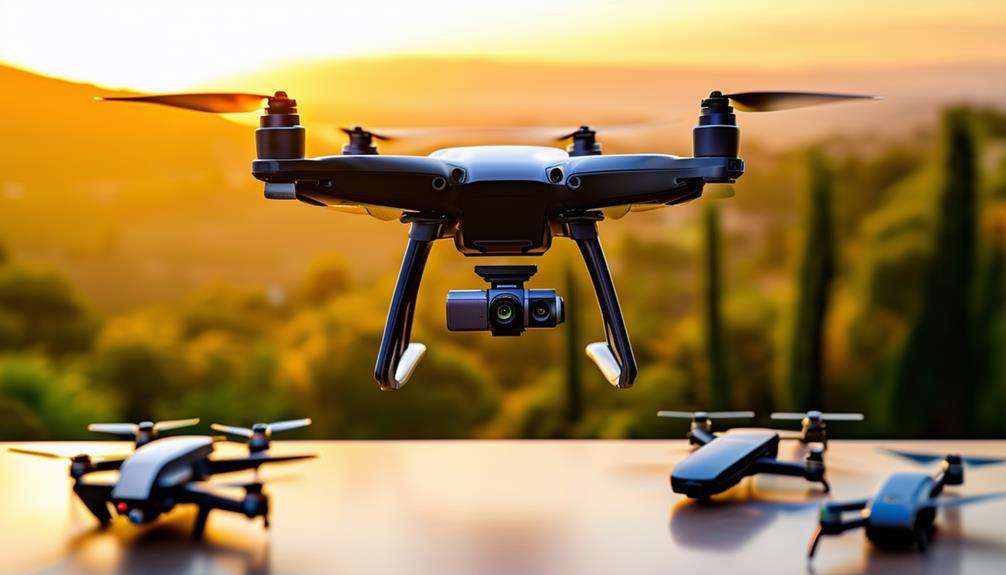
When selecting the right drone, prioritize models with 4K or 6K cameras for capturing high-resolution footage. A high-quality camera is crucial for stunning aerial shots, ensuring every detail is crisp and clear.
Additionally, look for drones equipped with advanced gimbals, which stabilize the camera to deliver smooth, professional-looking footage even during rapid movements or in windy conditions.
Battery life is another key consideration. Choose drones with extended battery life to maximize your filming sessions without frequent interruptions. A longer battery life allows you to capture more footage before needing to recharge, providing greater flexibility and creative freedom.
Advanced GPS features can significantly enhance your drone's performance. These features offer precise control and flight stability, enabling you to focus on capturing the perfect shot without worrying about the drone's position. GPS capabilities also enable useful functions like return-to-home and waypoint navigation, making your flying experience more efficient and enjoyable.
Lastly, responsive controls and a user-friendly interface are essential for an excellent flying experience. Drones with intuitive controls make it easier to maneuver and capture the footage you envision, ensuring you get the most out of your aerial adventures.
Planning Your Shots
Selecting the perfect drone is just the beginning; now it's time to plan your shots to capture breathtaking aerial footage. Start by scouting your location and checking weather conditions to ensure smooth and efficient filming. Understanding the terrain and identifying potential obstacles will help you plan camera angles and shot sequences in advance, saving time and battery life.
Creating a storyboard or shot list is essential. It guides your filming process, ensuring you capture all the desired shots in a coherent sequence. This planning step allows you to think creatively about various camera angles and movements, adding visual interest to your footage.
Map out your flight path meticulously to avoid obstacles and optimize your drone's capabilities. Consider the progression of each shot and the overall flow of your video. Proper planning not only makes your filming process more efficient but also helps you capture stunning aerial footage that stands out.
Mastering Camera Movements
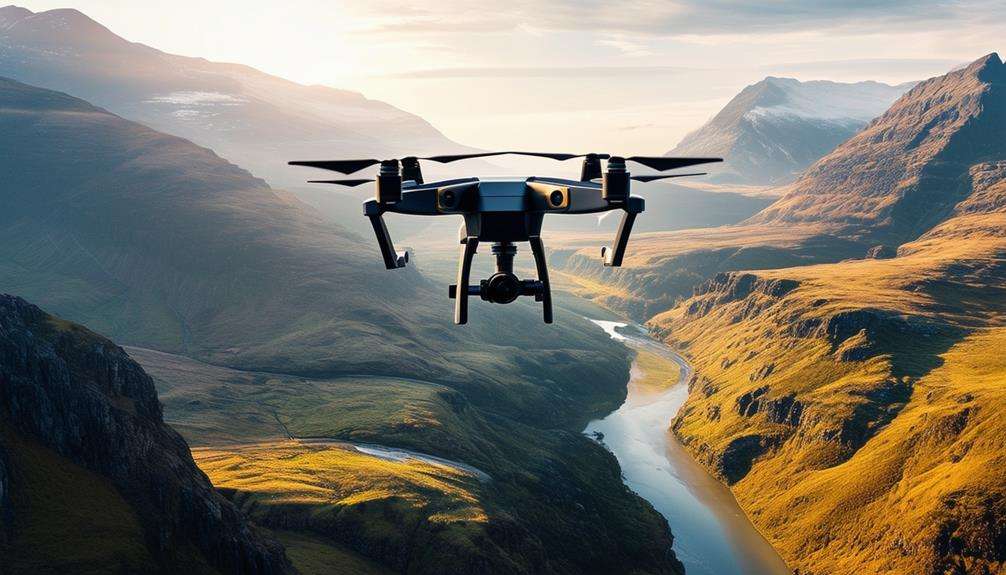
Mastering camera movements can elevate your aerial footage from ordinary to exceptional, adding dynamic elements that captivate viewers. Techniques like panning, tilting, orbiting, tracking, and zooming transform static shots into smooth, cinematic experiences, each offering a unique way to present the landscape. Panning involves moving the camera horizontally to capture sweeping views, ideal for showcasing vast terrains. Tilting shifts the camera up or down, adding depth and dimension.
Orbiting around a subject provides a 360-degree perspective, perfect for highlighting points of interest dynamically. Tracking follows a moving subject, keeping it in the frame while revealing the surrounding environment.
Zooming in or out adjusts the focal length, allowing you to emphasize details or capture broader scenes without repositioning the drone. Combining these movements achieves smooth, cinematic shots.
Optimizing Camera Settings
Adjusting your drone camera settings is crucial for capturing high-quality aerial footage. Begin by fine-tuning shutter speed, aperture, ISO, and white balance. Higher frame rates are ideal for slow-motion effects, while lower shutter speeds can create engaging motion blur. Conversely, higher ISO settings help manage low-light conditions, ensuring clear footage.
Balancing the aperture is essential for controlling depth of field and the amount of light entering your camera. Always review the histogram and exposure meter to ensure proper brightness and contrast levels. The histogram visually represents exposure, aiding in avoiding overexposure or underexposure, while the exposure meter helps achieve well-balanced footage.
White balance adjustments ensure natural and consistent colors, especially in changing lighting conditions. Using RAW capture mode provides more flexibility in post-processing, allowing for detailed tweaks without quality loss. Experiment with different settings to find the optimal combination that enhances your aerial footage and aligns with your visual style.
Editing and Post-Production Techniques
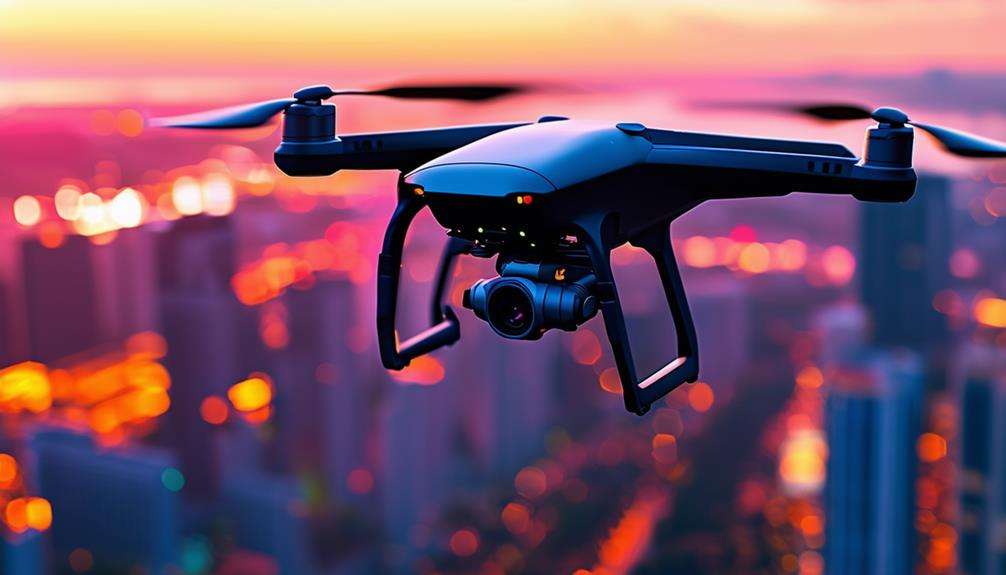
Editing and post-production techniques are crucial for transforming raw aerial footage into captivating visual narratives. By using advanced software and methods, you can elevate your aerial videos to professional standards. Leading editing software such as Adobe Premiere Pro, Final Cut Pro, and DaVinci Resolve offer an array of features that enhance your footage.
To make your aerial footage visually compelling, consider the following techniques:
- Color Grading: Enriches the mood and tone of your footage. Adjusting colors can make your visuals more vibrant and engaging.
- Stabilization: Techniques like warp stabilization or using a gimbal can reduce shakiness and ensure smooth motion in your videos.
- Color Correction: Correct any color imbalances to achieve a natural look. Adjusting brightness, contrast, and saturation can significantly improve visual impact.
- Trimming and Transitions: Edit out unnecessary parts, add smooth transitions, and create a cohesive narrative.
- Incorporate Music: The right soundtrack can amplify the emotional impact of your aerial videos.
Mastering these post-production techniques will transform your raw drone footage into stunning, professional-quality aerial videos that captivate your audience.
Conclusion
By selecting the right drone, carefully planning your shots, mastering camera movements, and optimizing camera settings, you can capture stunning aerial footage that will captivate your audience.
Remember, the magic continues in the editing and post-production stages, where you refine and polish your work. With dedication and practice, you can transform your drone footage into breathtaking visual stories that showcase the world from an awe-inspiring perspective. Keep flying high and pushing creative boundaries!

